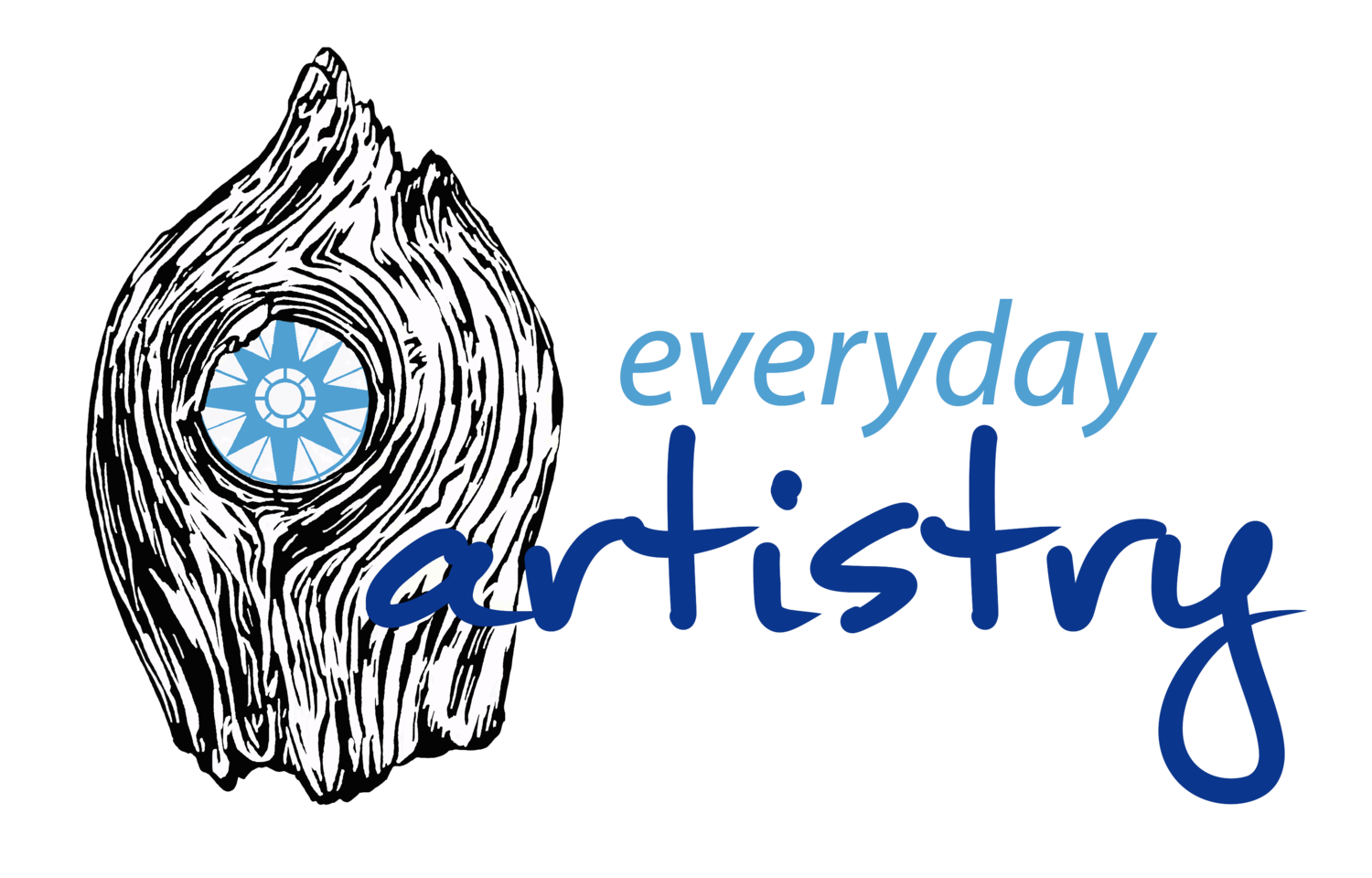I use a lot of maps in my artwork: I cover my sculptures in maps, use them as backgrounds for my linocuts, and have started making mixed-media paintings of imaginary maps. I also collect old maps and have a couple framed in my home.
The magic of maps is in the stories they tell: of the past and the future, of reality and the imagination, and of science and exploration.
Here are 11 talented, inspiring artists who are telling beautiful stories through their unique use of maps.
Maps as Materials
Artists who modify real maps by cutting, pasting, and painting over them to make something magical.
Matthew Cusick: These incredible works look like paintings but when you look closer you can see they're made entirely of cut maps. These waves are my favourite: "Maps and nautical charts are more or less obligated to objectivity. What these to-scale illustrations are lacking is exactly what Matthew Cusick gives them: impulsiveness, emotion, and power. In Map Works, Matthew Cusick puts together pieces of maps like a puzzle, creating an intoxicating and “roaring” new image. Massive waves rise up where there would otherwise only be numbers and lines." (source)
Ed Fairburn: For this artist, maps become a canvas that dictates what will emerge: "Using a wide variety of canvases including railroad blueprints, star charts, geological and street maps, Welsh artist Ed Fairburn uses additive and subtractive techniques to create portraits that seem pefectly integrated with the topography of streets, mountains and rivers. One of his most striking methods is to carefully follow map contours with a pen creating rows of lines that vary by width to create individual forms and shadows. The final portraits are so entwined with the map, it becomes hard to imagine one existing without the other." (source)
Claire Brewster: I keep running into her work in different places and I love it, especially the birds and flowers cut from maps that hover delicately over white walls. Her newest pieces are not map related but still amazing. (Instagram)
Shannon Rankin: If you flip through her porfolio, you'll dozens of different ways that maps can be manipulated to tell new stories. Carved up, layered, pinned, glued, folded, and crumpled, these new maps created from old maps are mesmerising. (Instagram)
“Maps are the everyday metaphors that speak to the fragile and transitory state of our lives and our surroundings. Rivers shift their course, glaciers melt, volcanoes erupt, boundaries change both physically and politically. The only constant is change.” (source)
Maps of Real Places
Artists who dive deep into the stories of real cities and countries - both personal and universal - to create their own unique take on these places.
Matthew Picton: Paper sculptures of cities around the world, made with papers unique to the history of the place. The descriptions on his website about each piece are as interesting as the pieces themselves.
"A continuous visual narrative of a city’s transformation, his sculptures are layers of history, documenting their early beginnings and depicting their contemporary state, expanding beyond their original forms. meticulously built by hand from individual strips of paper, each sculpture is more than a mere three-dimensional city map. Picton tries to emphasize a city’s distinct and unique personality. several of his maps depict cities such as Venice, London, Las Vegas or Moscow before and after a war of natural disaster, using charred or crumbled paper." (source)
Sarah Drake: Her 3-D globes and maps are whimsical and 100% tailored to her clients. Each map tells their own specific story about a place that means something to them. I've been following her on Instagram and love seeing how they come together. (Instagram)
"I also discovered my brain thinks better in 3D and that I draw better with a scalpel than a pencil. I developed my love of colour, pattern and shiny things and a penchant for skip-diving, using recycled materials and papier mache." (source)
Imaginary Maps
Artists who use the typical repeating shapes of maps to evoke landscapes that are both fantastical and instantly recognisable.
Emily Garfield: These imaginary maps are all over Pinterest and I was excited to see that they're made by the same talented person. (Instagram)
"Emily Garfield likes to say that she grows cities. With pen, ink, and watercolor, the Boston-based artist creates maps of imaginary places that tap into the essence of urban form. 'They evolve as I draw,' she says of her free-form cartographs. 'I think that's related to the way cities grow in real life.'" (source)
Patrice Dworkin: I started following Patrice on Instagram when she was doing 100 days of treasure maps for #the100dayproject and have loved watching further series evolve - many of which are inspired by the landscape and topography of her California home. (Instagram)
Map-like Imagery
Artists expressing scientific, technological, and data-based themes with beautifully abstract imagery.
Derek Lerner: This is another artist whose map-like abstract drawings show up a lot on Pinterest and I was happy to look into the ideas behind them. Lerner is "an NYC-based artist whose work explores systems: their creation, control, use and experience of them. Lerner's abstract ink on paper drawings co-mingle representations of human-made and natural systems and the tensions between those forces. From an aerial vantage point, his compositions grow, line by line, through an additive, extemporaneous process into fictional spaces that juxtapose these systems, signs, and symbols." (Instagram)
Etienne Gelinas: These mixed-media paintings combine imagery from maps, architectural plans, sewing patterns, and technical drawings in an exploration of what he calls, "the opposition of different codes: I strive to make the pictorial and scientific worlds coexist in a single space."
Katy Ann Gilmore: Follow Katy Ann for a delightful exploration of "topography and the relationship between 2D, perpendicular planes and their distortions into 3D space." Her intricate line drawings were a big influence on my own drawing practice. (Instagram)


